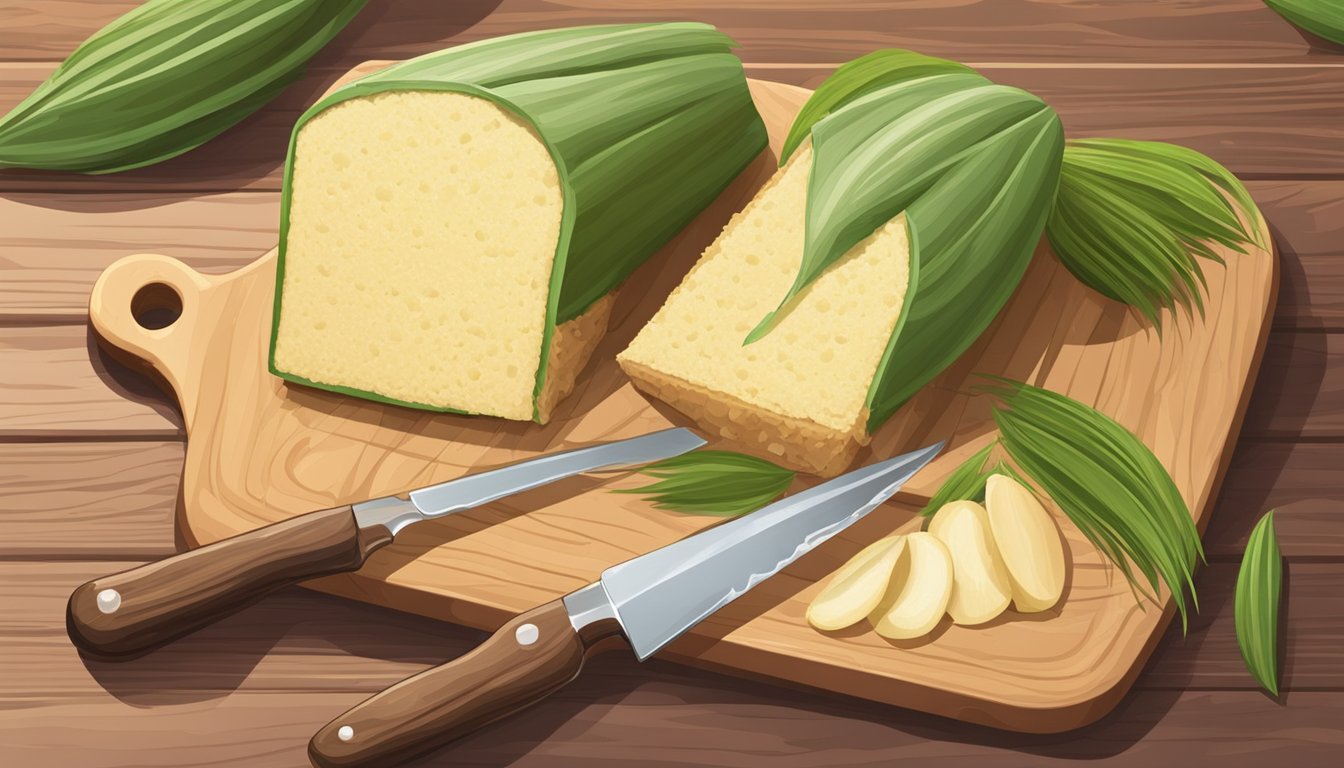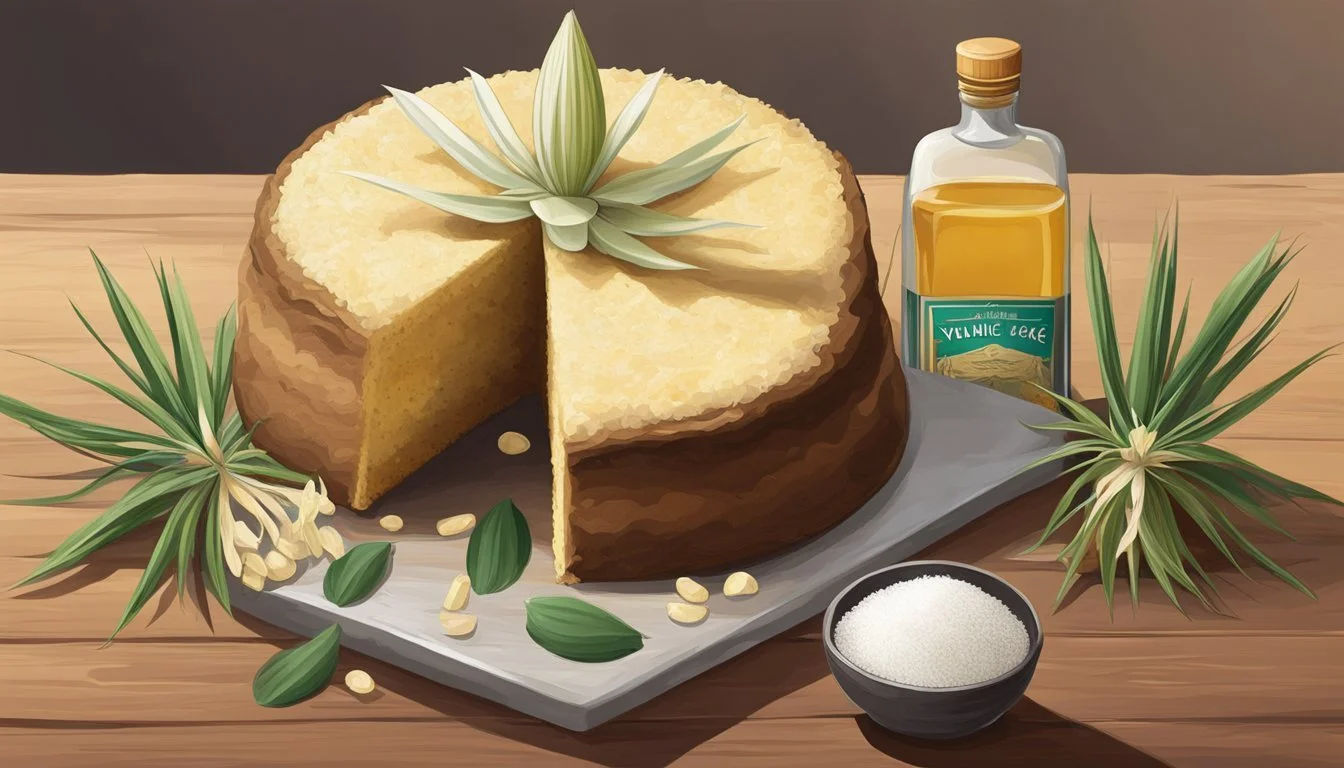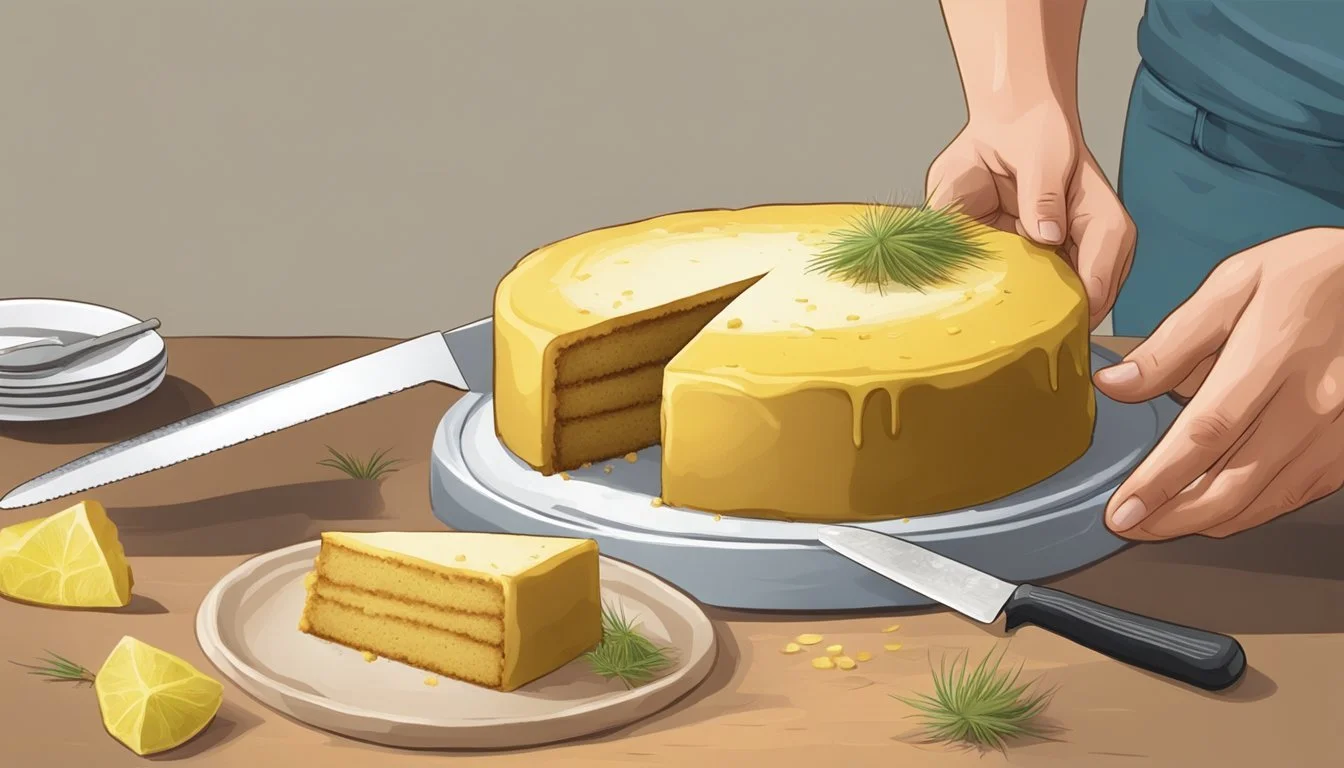How to Eat a Yucca Cake:
A Simple Guide to Enjoying This Traditional Dessert
Yucca cake, not to be confused with the ornamental yucca plant, is a tempting dessert made from the root of the cassava plant, also known as yuca. This starchy tuber is a staple food in many parts of the world and lends itself to a variety of dishes, both savory and sweet. Among these, yucca cake stands out as a beloved treat, combining the subtly sweet flavors of yuca with ingredients like coconut, butter, and spices to create a rich and satisfying dessert.
The texture and flavor of yucca cake can vary from recipe to recipe, but traditional versions often showcase a dense, moist crumb that's reminiscent of some classic American sweet breads. It is important to properly prepare the yuca, which typically involves peeling, grating, and cooking, to ensure a smooth consistency. Incorporating additional elements like cinnamon, nutmeg, and vanilla enhances the inherent sweetness of the yuca, resulting in a dessert that is both unique and familiar.
As a dessert, yucca cake can be enjoyed in various settings, from casual family gatherings to festive celebrations. Its versatility allows it to be served either warm or at room temperature, depending on personal preference. The cake may also be garnished with powdered sugar, fruit, or a complementary sauce to enrich the eating experience.
Yucca Cake Overview
Yucca cake is a traditional dish made from the starchy root vegetable, yucca (also known as cassava), which is native to Latin America. Rich in carbohydrates and vitamin C, yucca cakes (how long do cakes last?) embody a unique blend of nutrition and cultural significance across various regions.
Understanding Yucca
Yucca, a cornerstone in tropical diets, is a versatile root vegetable consumed in various forms. Known scientifically as Manihot esculenta, it resembles a sturdy, fibrous root. The plant thrives in tropical climates and forms an integral part of many Latin American cuisines. When preparing yucca cake, one must first process the raw yucca by grating or blending it into a fine mixture.
Health Benefits and Nutritional Value
Yucca is not only a source of energy due to its high starch content but also packs a number of micronutrients. It is particularly noted for its vitamin C content, essential for immune system support, and skin health. Each yucca cake serving incorporates these health benefits while satisfying the palate.
Primary Nutrients:
Carbohydrates
Vitamin C
Regional Variations of Yucca Cake
Yucca cake varies notably across different regions in Latin America. Some recipes call for added coconut, butter, and spices such as cinnamon and nutmeg, while others may include local ingredients like anise or almond extract. Each variation reflects the region's specific palate and available resources. In Panama, for instance, an enyucado is a beloved version that includes coconut alongside the yucca.
Examples of Regional Variations:
Yuca Cake - The Recipe Island: Features coconut milk and cinnamon.
Cassava Pone - Alica’s Pepperpot: Incorporates grated coconut and a mixture of spices.
Enyucado - Panama: Highlights the inclusion of coconut and anise.
Essential Ingredients
The mastery of yucca cake relies on the perfect blend of its essential ingredients. Picking the right type, quality, and combination of these elements is critical to creating a traditional and delicious cake.
Cassava: The Primary Ingredient
Cassava, also known as yuca root, is the cornerstone of yucca cake. It must be peeled, grated, or mashed to form the base of the cake. Whether using fresh cassava or pre-processed versions, the quality of the yuca root determines the texture and authenticity of the cake.
Dairy Components in Yucca Cake
Dairy elements provide moisture and richness to the yucca cake. Milk—often in the form of coconut milk or evaporated milk—creates a creamy consistency. Additional dairy such as eggs and butter not only enrich the flavor but also contribute to the structure and stability of the cake.
Sweeteners and Flavorings
The taste of yucca cake is enhanced with sweeteners and flavorings. Commonly, sugar — either white or brown — is used to sweeten the cake. Vanilla extract adds a warm, aromatic flavor dimension. In some recipes, sweetened condensed milk doubles as a sweetener and dairy component, lending a unique creamy sweetness.
Preparing for the Yucca Cake
The preparation of yucca cake centers around organizing ingredients, ensuring necessary tools are at hand, and managing time effectively.
Initial Steps and Prep Time
One begins by grating the cassava root, which is the foundation of the cake. This ingredient should be processed until one achieves a consistency that will blend smoothly with other elements of the recipe. Prep time may vary, but grating the cassava and mixing the ingredients generally takes around 20 to 30 minutes. Following this initial preparation, baking the cake typically requires 1.5 to 2 hours, depending on the specific recipe used.
Required Tools and Equipment
To prepare yucca cake, a food processor or blender is essential to puree the grated cassava effectively. Alongside this, a boiler may be required if one needs to soften the yucca ahead of blending. Here is a succinct list of tools needed:
Food processor or blender: Purees the cassava.
Boiler (optional): Softens the cassava if necessary before pureeing.
Baking dish or greased pan: Houses the cake mixture for baking.
Ensuring that the pan is well-greased is crucial to prevent sticking and to achieve a palatable texture and presentation upon completion.
Making the Yucca Cake
Yucca cake, a traditional dessert, demands careful preparation of the batter, precise baking, and delicate finishing touches. Each step is crucial to ensure the final product is delicious and has the right texture.
Mixing the Batter
One starts by combining grated yucca with dry ingredients such as sugar, a pinch of salt, and potentially spices like cinnamon, allspice, and nutmeg for added flavor. It is common to incorporate wet ingredients like eggs, butter, and sometimes coconut milk to enrich the batter. The mixture should be thoroughly stirred to ensure even distribution of the ingredients.
Baking Process
The batter is then poured into a greased baking dish and placed in a preheated oven. The baking temperature typically ranges around 350°F (175°C). The cake requires close monitoring to prevent over-baking, usually taking about 30-50 minutes depending on the recipe and oven specifics. The cake is done when it's golden brown on the surface and a toothpick inserted into the center comes out clean.
Finishing Touches
Once baked, the yucca cake needs to cool down to enhance its flavors and texture. For a more indulgent experience, some recipes suggest drizzling a sweet milk sauce or syrup. If one desires, fresh grated coconut can also be sprinkled on top for a pleasant contrast and decoration.
Serving and Storage
When enjoying yucca cake, proper presentation elevates the experience and appropriate storage ensures lasting freshness. These steps are crucial whether one is savoring a rich cassava cake or a subtler yucca cake variant.
Presentation and Pairing Suggestions
Upon serving, one may opt to cut the yucca cake into evenly sized portions, ensuring each guest receives an equal share. The servings can be beautifully plated, often enhanced by a dollop of custard or a drizzle of coconut oil for added richness. For a refreshing contrast, consider pairing the cake with a cup of hot coffee, the warmth and bitterness complementing the cake's sweetness perfectly. If a dipping sauce is preferred, a sweet milk sauce can serve as an indulgent accompaniment.
Storing Leftovers
To maintain the yucca cake's quality, leftovers should be stored in an airtight container. It is recommended to keep the cake in the refrigerator if it contains perishable ingredients like custard or coconut oil. The refrigerated cake typically remains fresh for up to one week. For longer storage, one might freeze the cake in a well-sealed container for up to a month, though careful defrosting is necessary to preserve texture and flavor.
Alternative Uses and Variations
Yucca cake is a delicious and versatile dish that can serve as a starting point for a variety of culinary creations. Beyond the traditional cake, yucca can be incorporated into numerous other recipes or adapted to fit dietary needs and personal tastes.
Yucca in Other Forms
Yuca Fries: Yucca, when sliced and fried, can make a crisp and gluten-free alternative to traditional potato fries.
Tapioca: Extracted from yucca, tapioca is often used in puddings and as a thickener in soups and sauces.
Cassava Pone: A traditional Caribbean dessert made from grated yucca, spices, and sugar, often enjoyed as a comfort food.
Customization Ideas
For those looking to personalize their yucca cake or extend its use into other dishes:
Gluten-Free Options: Swap out regular flour for yucca flour to create a gluten-free version of your favorite baked goods.
Salads and Soups: Use cooked yucca as a hearty addition to salads and soups, lending a subtle sweetness and filling quality.
Potential Concerns and Precautions
Before indulging in yucca cake, consumers should be aware of possible dietary concerns and the necessary precautions for safe consumption. Understanding these aspects ensures a delightful and risk-free culinary experience.
Allergy and Dietary Considerations
Individuals with specific food allergies or dietary restrictions should carefully consider whether yucca cake is appropriate for their consumption. Yucca, also known as cassava, may trigger reactions in those with sensitivities to similar produce. Moreover, yucca cake is often made with tapioca starch, derived from the cassava plant, which is typically gluten-free and suitable for those with celiac disease. Nevertheless, cross-contamination could occur if the yucca cake is prepared in an environment that also processes wheat or other allergens.
Proper Preparation to Avoid Toxins
It is crucial to properly prepare yucca cake to ensure it is free of harmful toxins. Raw cassava contains compounds that can convert into cyanide when ingested. These are predominantly found in the leaves and roots of poorly processed cassava plants. To prevent potential toxicity, one must:
Purchase yucca (cassava) that has been well-processed.
If using frozen cassava, ensure it has been prepared according to safety standards before freezing.
When making yucca cake from scratch, use cassava flour, which is typically pre-treated to reduce toxin levels.
By strictly adhering to these preparation guidelines, one significantly mitigates the risk associated with cyanide found in improperly processed yucca.






